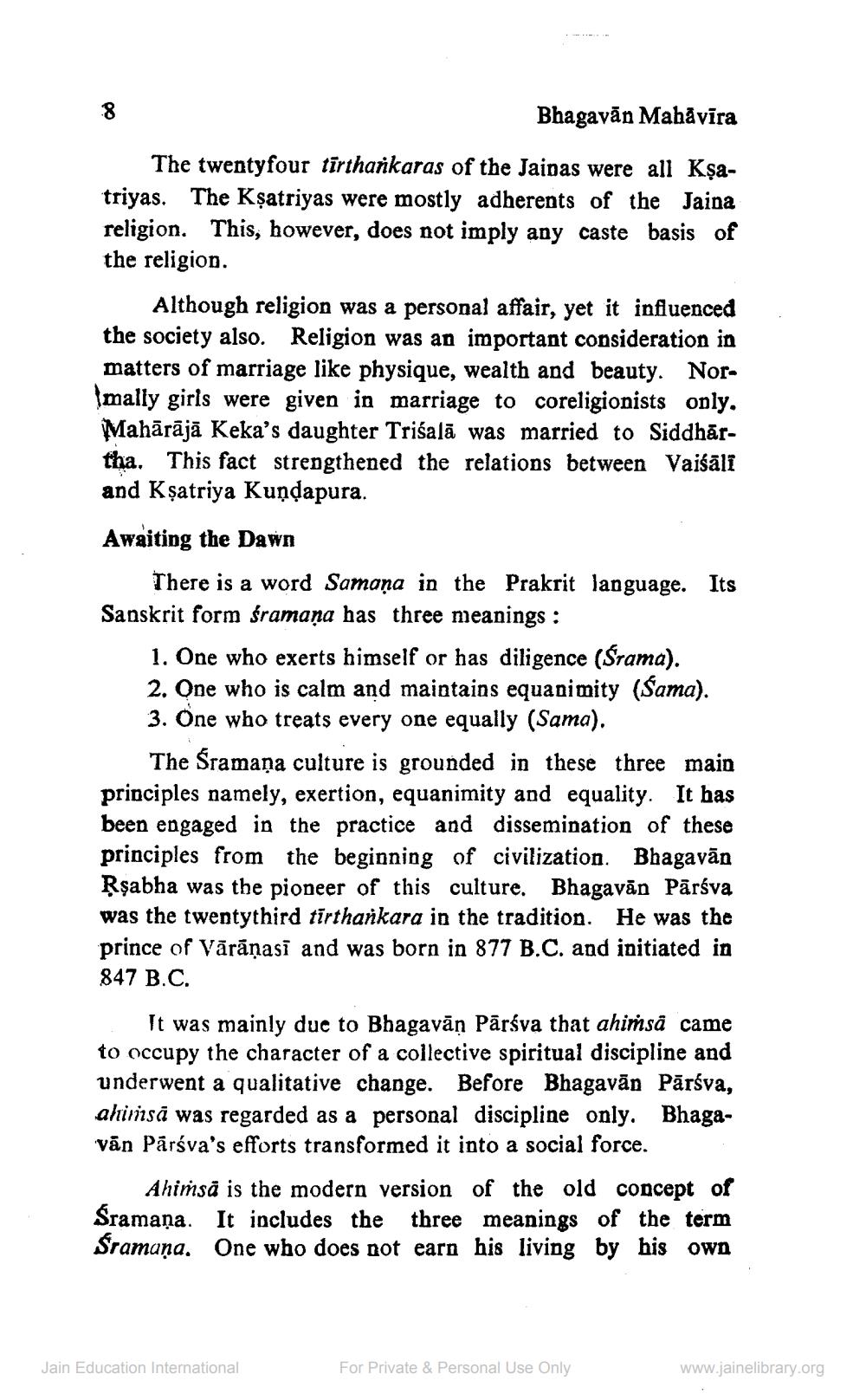________________
Bhagavān Mahāvīra The twentyfour tirtharkaras of the Jaipas were all Kșatriyas. The Kșatriyas were mostly adherents of the Jaina religion. This, however, does not imply any caste basis of the religion.
Although religion was a personal affair, yet it influenced the society also. Religion was an important consideration in matters of marriage like physique, wealth and beauty. NorImally girls were given in marriage to coreligionists only. Mahārājā Keka's daughter Trišalā was married to Siddhārtha. This fact strengthened the relations between Vaiśāli and Kșatriya Kundapura. Awaiting the Dawn
There is a word Samaņa in the Prakrit language. Its Sanskrit form śramana has three meanings :
1. One who exerts himself or has diligence (śrama). 2. One who is calm and maintains equanimity (sama). 3. One who treats every one equally (Sama).
The Sramaņa culture is grounded in these three main principles namely, exertion, equanimity and equality. It has been engaged in the practice and dissemination of these principles from the beginning of civilization. Bhagavān Rşabha was the pioneer of this culture. Bhagavān Pārsva was the twentythird tirtharkara in the tradition. He was the prince of Vārāṇasī and was born in 877 B.C. and initiated in 847 B.C.
It was mainly due to Bhagavān Pārśva that ahińså came to occupy the character of a collective spiritual discipline and underwent a qualitative change. Before Bhagavān Pārsva, ahirsa was regarded as a personal discipline only. Bhagavān Pārsva's efforts transformed it into a social force.
Ahissä is the modern version of the old concept of Sramaņa. It includes the three meanings of the term Sramaņa. One who does not earn his living by his own
Jain Education International
For Private & Personal Use Only
www.jainelibrary.org




